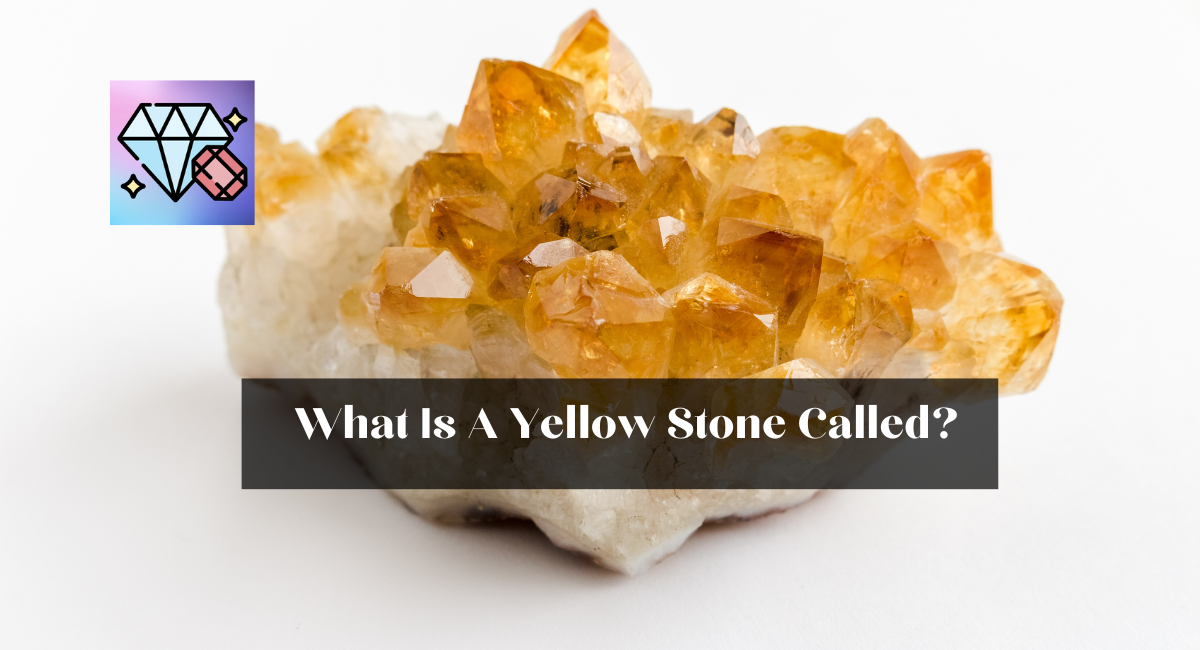Gemstones inhabit a captivating domain brimming with a kaleidoscope of hues and distinctive properties. The yellow stone stands out among these precious and semiprecious stones for its vibrant and sunny hue.
With their warm and luminous radiance, yellow gemstones have been prized for their attractiveness and symbolism in various cultures and periods. This article, will explain what is a yellow stone called.
What Is A Yellow Stone Called?
1. Citrine
Citrine is called the “success stone” or the “merchant’s stone” due to its association with wealth and prosperity. Its yellow and orange hues are believed to represent the sun’s energy, bringing warmth and positivity into one’s existence.
Citrine is associated with the solar plexus chakra, which enhances self-confidence and personal strength and is thought to aid in manifesting objectives and dreams.
2. Yellow Sapphire
Yellow sapphire has been revered for centuries due to its beauty and metaphysical properties. It is frequently used to improve intelligence, knowledge, and communication abilities.
Jupiter is associated with yellow sapphire, believed to deliver blessings, good fortune, and spiritual development.
3. Yellow Topaz
Topaz jaune is prized for its clarity, luminosity, and strength. It is believed to promote self-assurance and attract success and prosperity.
In addition to being associated with the solar plexus chakra, yellow topaz is a protective stone shielding the wearer from negative energies and encouraging a positive outlook.
4. Yellow Diamond
Yellow diamonds are a form of colored diamond that possesses a yellow or yellowish hue. They range in intensity from faint to vibrant.
The greater the diamond’s value, the more intense the yellow shade. Yellow diamonds are frequently used in high-end jewelry and are valued for their uncommon and distinctive hue.
5. Amber
Amber is an organic gemstone formed from the fossilized resin of ancient trees and is not a mineral. Its warm yellow to reddish-brown hues invoke a sense of history and natural beauty.
For centuries, Amber has been used in jewelry, amulets, and religious artifacts. It is thought to transport the sun’s energy, which provides warmth, healing, and protection. Amber is also believed to have calming properties that can assist in calming the psyche.
6. Golden Beryl And Heliodor
Heliodor, or golden beryl, is the less well-known sibling of emerald. Because heliodor and emerald are both varieties of the mineral beryl, some dealers mislabel heliodor as “yellow emerald.”
Golden beryl gems can be highly saturated and brilliant and are frequently faceted in unusual ways. Occasionally, they undergo radiation treatment to enhance their color.
7. Chrysoberyl
Alexandrite is the most well-known color-changing variety of chrysoberyl. However, the majority of chrysoberyl is yellow. Do not allow alexandrite to obscure the other gorgeous gemstones in this species.
In addition to their durability, these gems create excellent jewelry stones. Moreover, they can exhibit a striking cat’s eye effect when cut as cabochons. Although some cat’s-eye specimens are irradiated to enhance their color, few faceted chrysoberyl crystals are enhanced.
8. Garnet
Garnet is one of the most beautiful yellow gemstones. While most recognize this January birthstone for its reddish-brown tints, it can be found in nearly every spectrum color. The grossular garnet variant hessonite can be yellow in hue.
The yellow variety of andradite garnet, topazolite, is far more spectacular. This gem has a higher dispersion than diamond, causing its “fire” to be varied. However, topazolite is uncommon, so locating the desired mineral may take some effort.
Mali garnets are composed of a combination of andradite and grossular chemistry and exhibit a high degree of dispersion and luminosity.
Assessing Color And Quality In Yellow Gemstones
- Gemologists evaluate color by taking hue, tone, and saturation into account.
- The dominant hue of yellow gemstones should be yellow.
- There may be secondary colors, but the most valuable stones are pure yellow.
- Secondary tints for yellow stones are green, orange, and/or brown.
- Secondary varieties of green are typically undesirable.
- However, they can give the stone a “neon” quality when minor.
- In general, orange secondary tints are preferred.
- For instance, popular “golden” colors have orange undertones.
- For an autumnal jewelry endeavor, brownish hues would be the best option.
Yellow Gemstones Ideal For Everyday Wear
- Some gemstones are more durable than others.
- These yellow gemstones have a Mohs hardness of at least 6.5, making them highly scratch-resistant.
- In addition, these gems are unlikely to shatter if dropped or struck against a surface.
- As a result, they make excellent gemstones for rings and everyday jewelry.
Yellow stones, with their bright and sunny hue, are revered for their aesthetic value and symbolic significance. Whether adorning jewelry, used in therapeutic practices, or admired for its aesthetic appeal, these gemstones illuminate the world with their golden warmth and distinctive properties.
Yellow stones continue to enthrall and captivate those who appreciate their vibrant, joyful allure, from the golden radiance of yellow diamonds to the calming energy of citrine and the stunning clarity of yellow sapphires.
Read More: What Is Obsidian Used For Spiritually?

